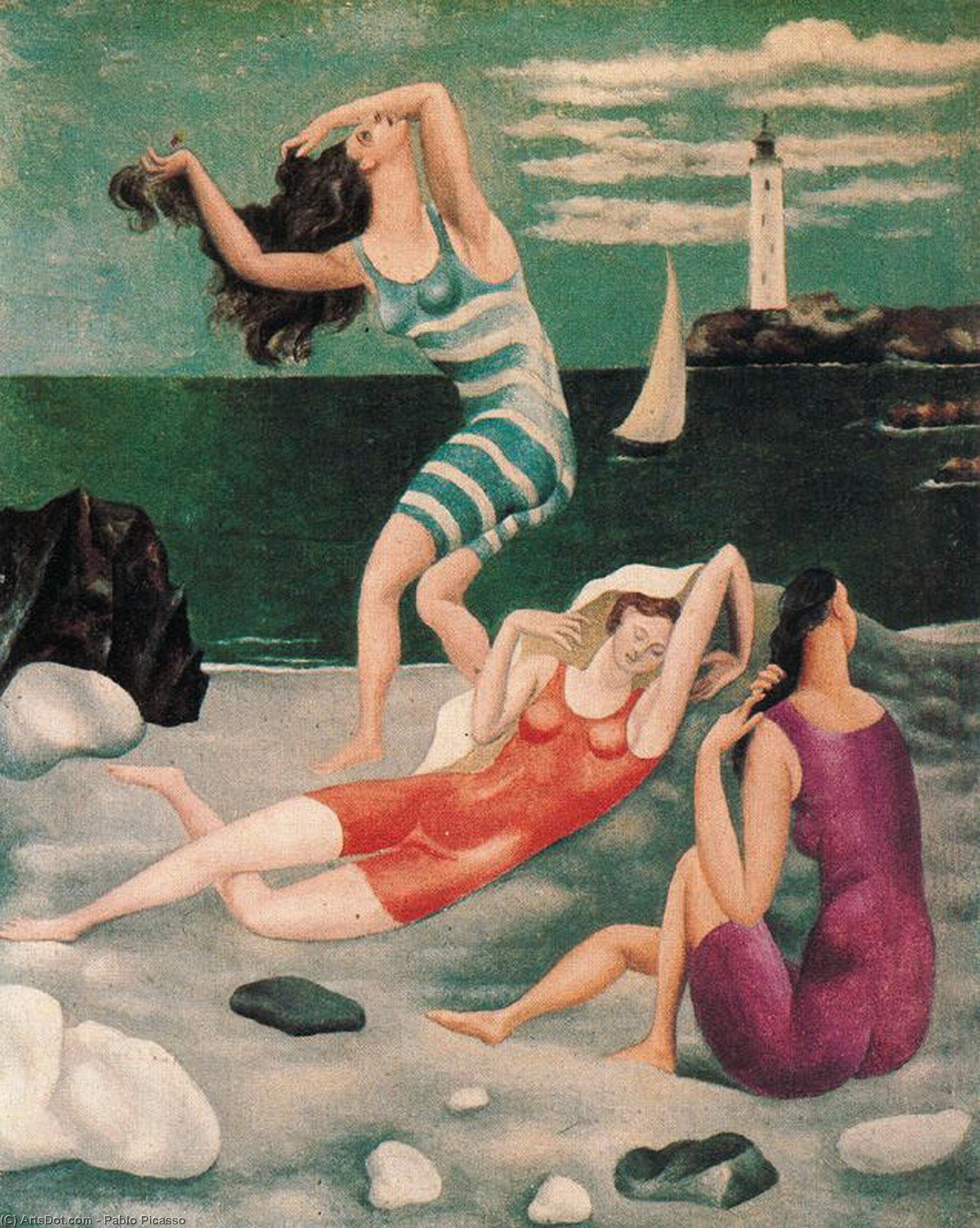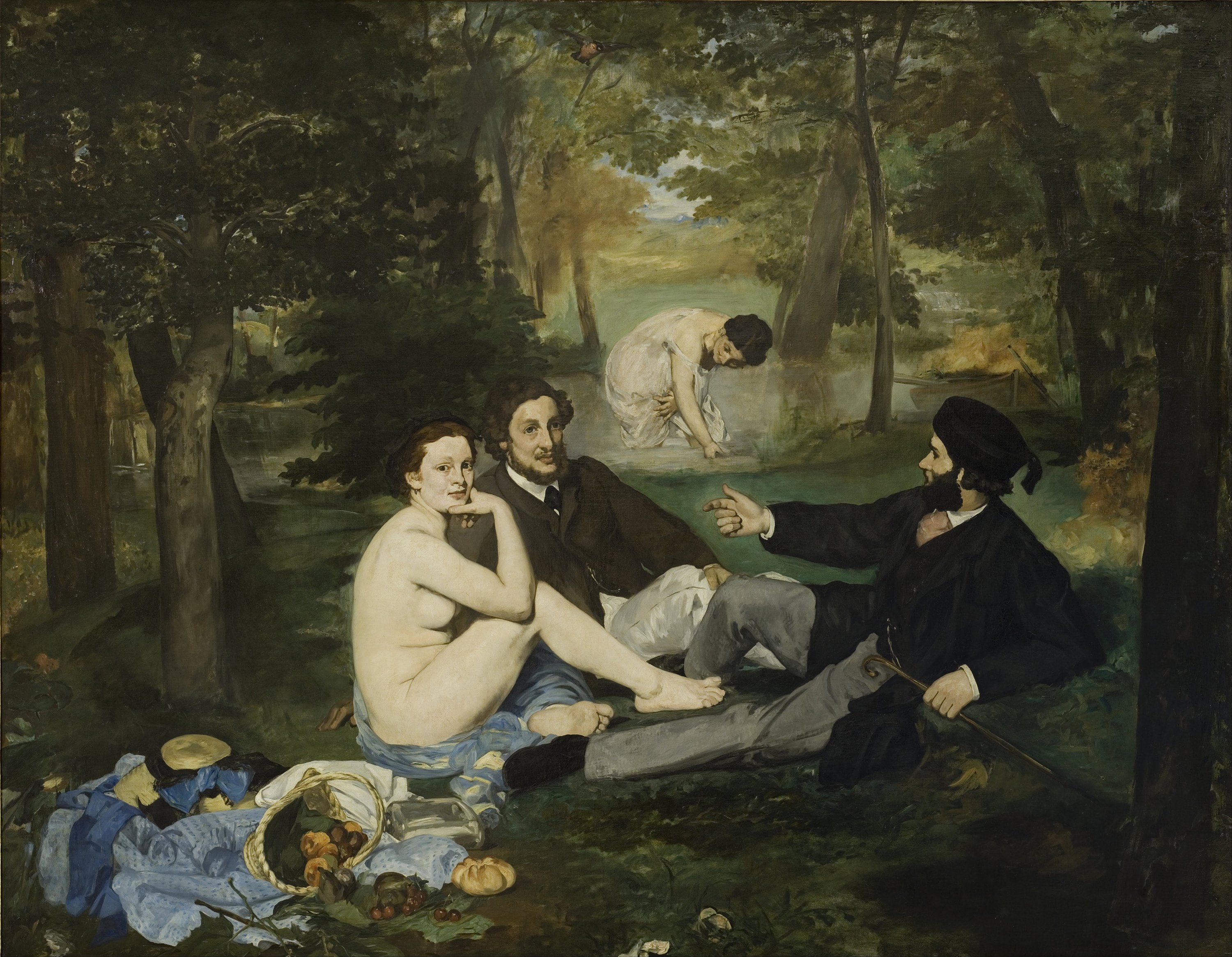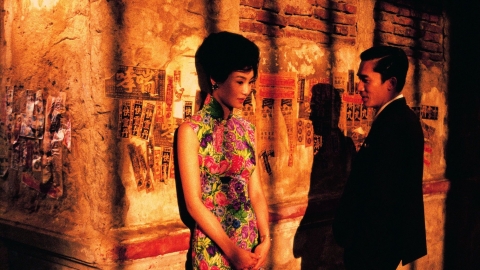Take a walk
Summer is here, the gardens are in full bloom, the fields are starting to glow golden, the skies are bluer and the sun is shining. All of this makes for the perfect inspiration for beautiful landscape paintings that when you look at them, you can almost smell the scent of summer flowers.

Summer (Frank Weston Benson, 1909) painted at Penobscot Bay
In the bright oil painting "Summer," Frank Weston Benson portrays his wife and children resting on a hill after a short walk from their home, the Wooster farm. Amidst the dry grass and white flowers, they gaze out over Maine's blue Penobscot Bay. The painting is full of summer energy, urging the viewer to get out of the house and not go far, simply to learn to find beauty in the scenery around them.
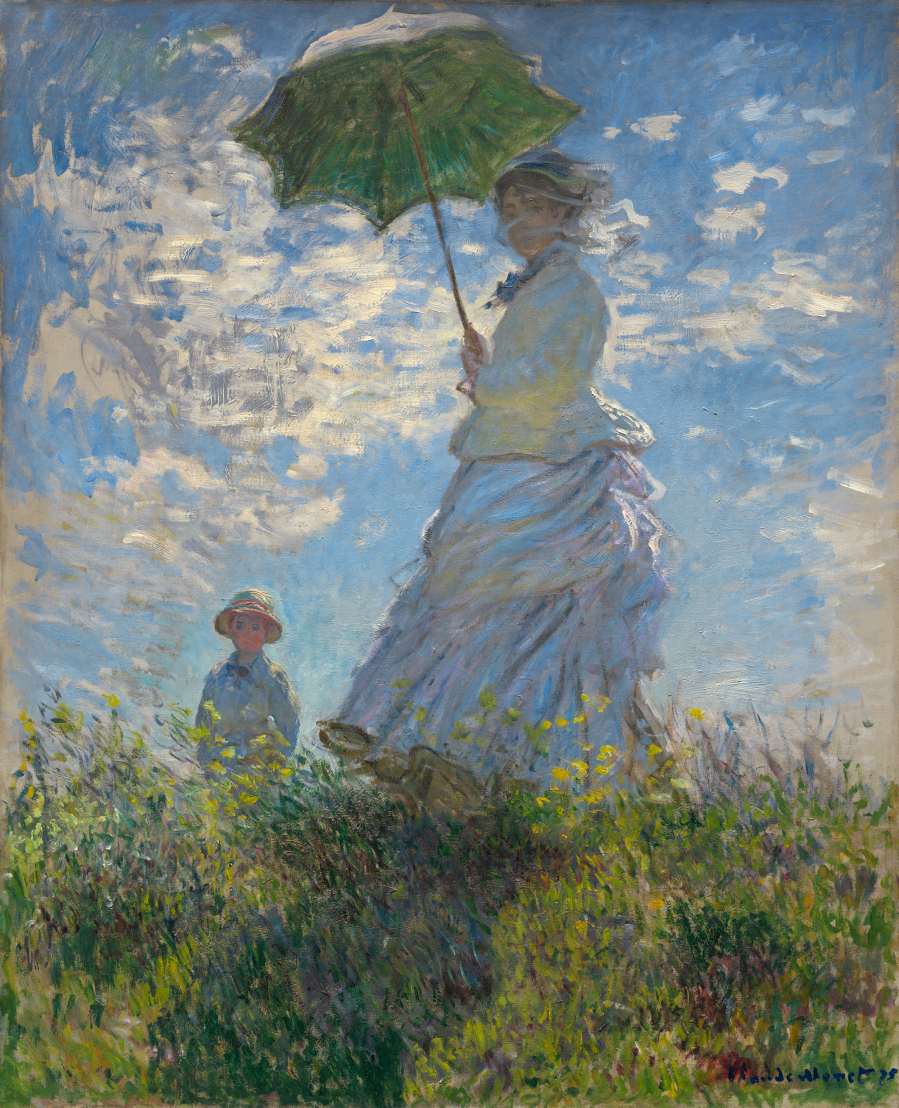
Woman with a Parasol - Madame Monet and Son (Claude Monet, 1875)

Strolling along the cliffs of Pourville (Claude Monet, 1882)

Round Flower Cluster (Claude Monet, 1876)
Claude Monet was also an artist who spent a lot of time enjoying nature, especially in the summer, the time of the year when the light is most beautiful. One of his most famous works, "Woman with a Parasol", is set in Argenteuil, the Paris suburb where his family lived from 1872 to 1878, depicting his wife and son taking a stroll in a sun-drenched meadow. In "Walking by the Cliffs of Pourville", he found inspiration in the beautiful scenery of the turquoise waters and flower-covered Pourville cliffs in Normandy. In "The Round Flower", Monet painted his wife walking in their garden with the innocent and carefree colors of a summer in the countryside.
Picnic
Summer is the perfect time to enjoy picnics and outings with friends and family. And so are artists! Picnics are not a new concept, having been the subject of many paintings since the early 19th century, often using broad brushstrokes and bright, vibrant color palettes to express the innocent, pure joy of summer.

Near the Basilica of San Miniato, Florence (Joseph Mallord William Turner, 1828)
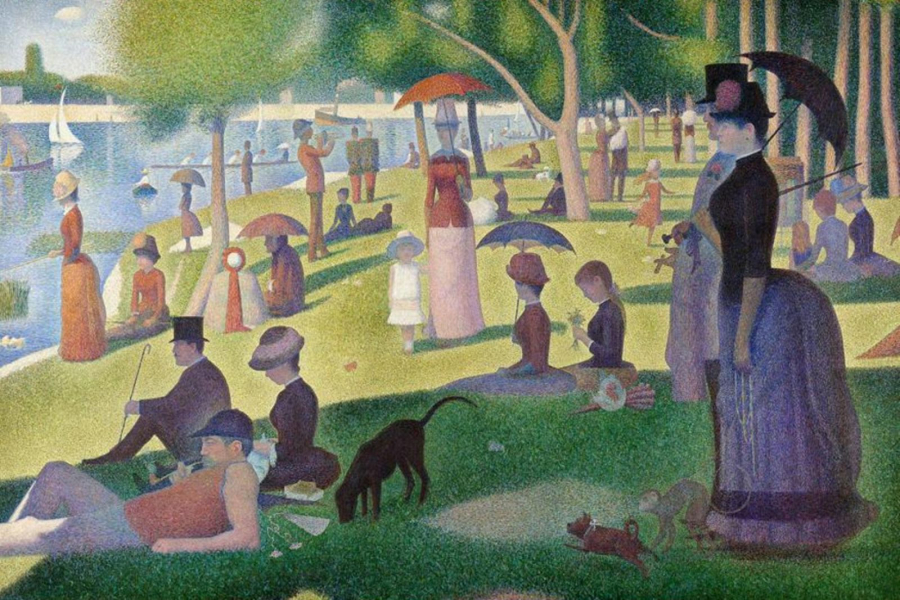
Sunday Afternoon on the Island of Grande Jatte (Georges Seurat, 1884)
Manet's "The Luncheon on the Grass" has all the ingredients for a successful picnic: a relaxing atmosphere, a lush green landscape, and delicious food. Manet's picnic was not well received by the public in 1863, due to its composition and the bold sidelong glance of the nude woman that confused viewers.

Luncheon on the Grass (Édouard Manet, 1863)
In the painting, a woman who seems to have just finished bathing is drying herself next to two men. Her clothes are spread out on the ground like a towel to sit on, as if she has not prepared carefully for this picnic. The two men beside her are engrossed in conversation, not paying attention to her. There is another woman behind, splashing in the pond. The surroundings seem quiet and the green of the leaves makes the viewer feel that the weather is cool. Everything exudes the spontaneity, comfort, casualness and freedom of a peaceful picnic in the countryside or by the forest. If you are also interested in such a picnic, remember to bring a towel.
swimming
Summer will not be complete if you miss the opportunity to swim in the clear blue water. Therefore, one of the most bustling and summer-like places is swimming pools and lakes. Artists have also taken advantage of this time to depict cool moments of people in the middle of nature.
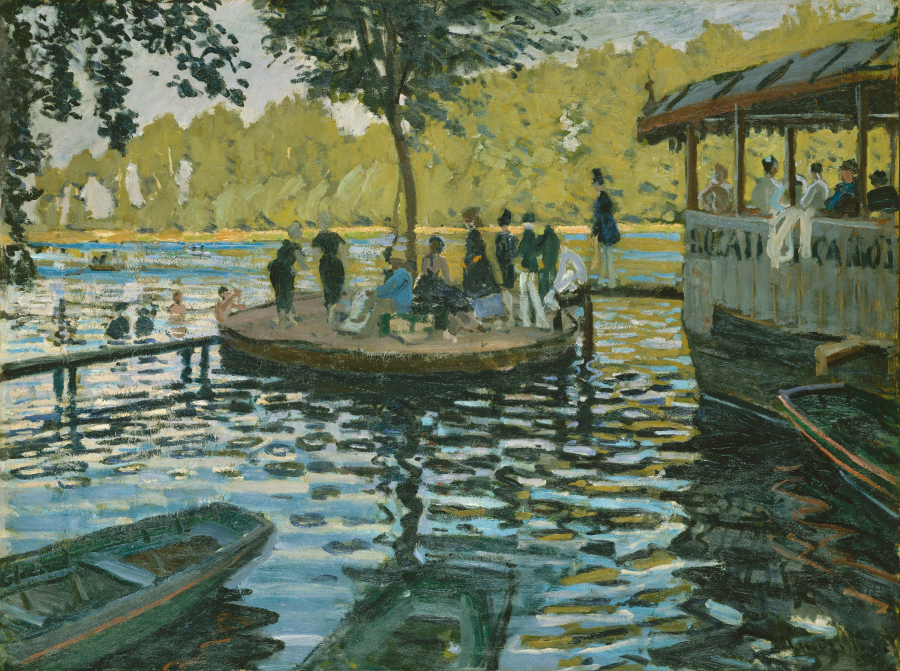
Frog Pond (Claude Monet, 1869)
The Frog Lake (La Grenouillere) is a popular spot for swimming and boating on Croissy on the Seine, close to Bougival, where Monet lived and worked in 1869. During the 1860s, it became a fashionable tourist attraction for Parisians who came to enjoy the idyllic setting and floating restaurants. Visitors ranged from artists, writers to aristocrats. Monet and his friend Renoir often painted together during this period, creating different works of the same scene. Monet's broad, uninhibited brushstrokes almost perfectly reproduce the shimmering sunlight on the lake and the cool atmosphere in the green of the leaves and sky.
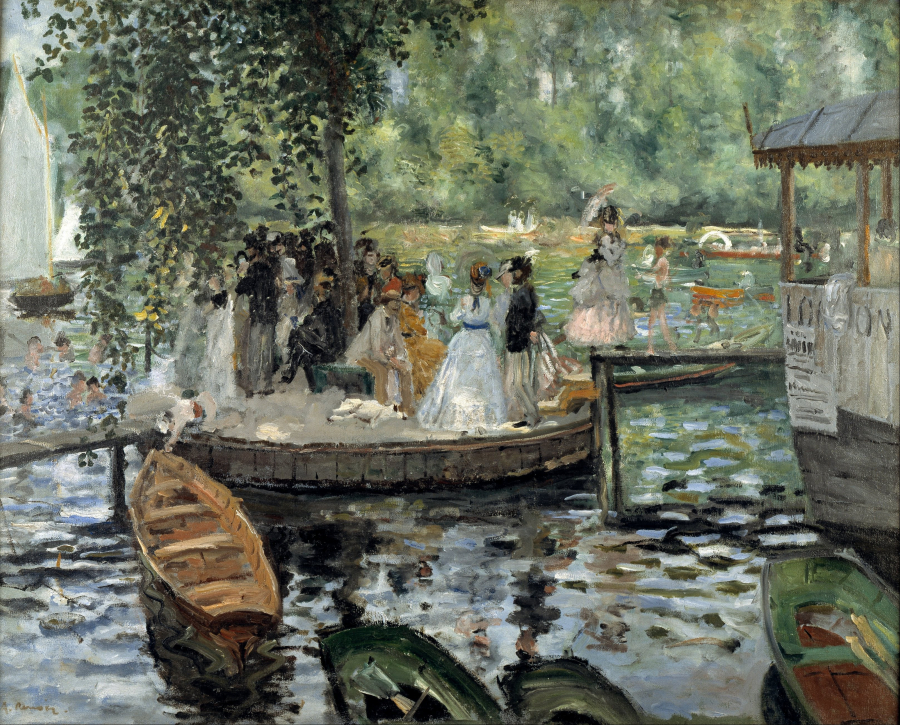
Frog Lake (Pierre-Auguste Renoir, 1869)
Renoir also painted Frog Lake while working with Monet, and gave it a close-up view with a small circular island of flowers to focus more on the people. His figures were more numerous and had individual characteristics, and he also painted rowers and a few sailboats in the background to add to the small island scene.
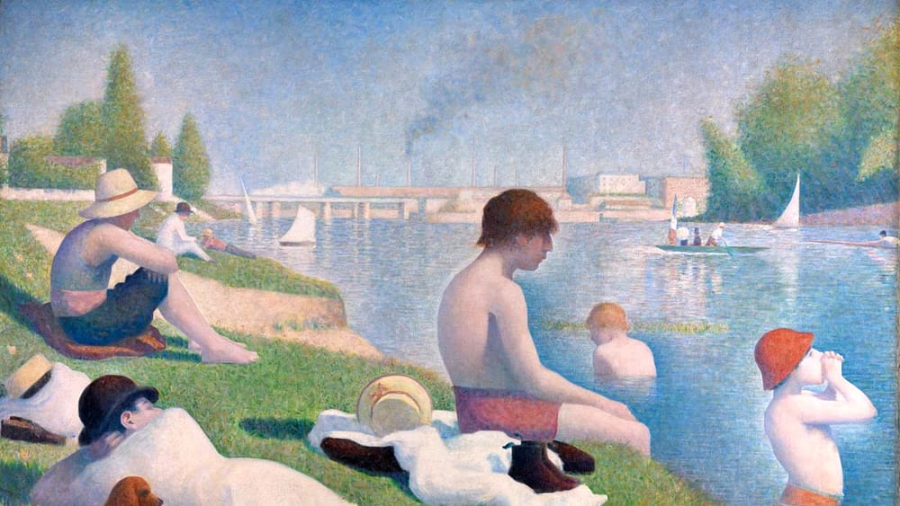
Swimming in Asnieres (George Seurat, 1884)
Another location on the outskirts of Paris along the Seine, Asnieres, was also popular with French townspeople in the 19th century. Unlike "A Sunday Afternoon on the Isle of Grande Jatte," which depicts a picnic for aristocrats, Seurat's painting depicts a working-class recreation spot on the opposite bank.
Sea bathing
The salty sea breeze, the sand under your toes, the passionate feeling of a summer beach is truly irresistible. Many famous artists have chosen summer beaches as their subject, and we can almost be sure that they would also take the opportunity to swim and sunbathe there, because the golden sunshine and sparkling blue sea are so inviting!
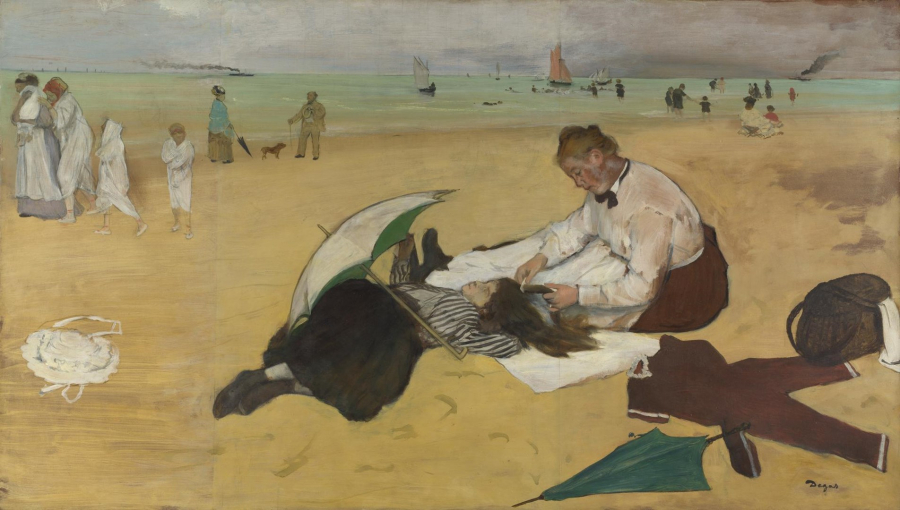
On the Beach (Edgar Degas, 1870)
In the eyes of artists, the sea appears in many forms: dreamy and relaxing in Degas's paintings, cool blue in Hopper's paintings, hot summer in Derain's paintings, windy afternoon in Monet's paintings...
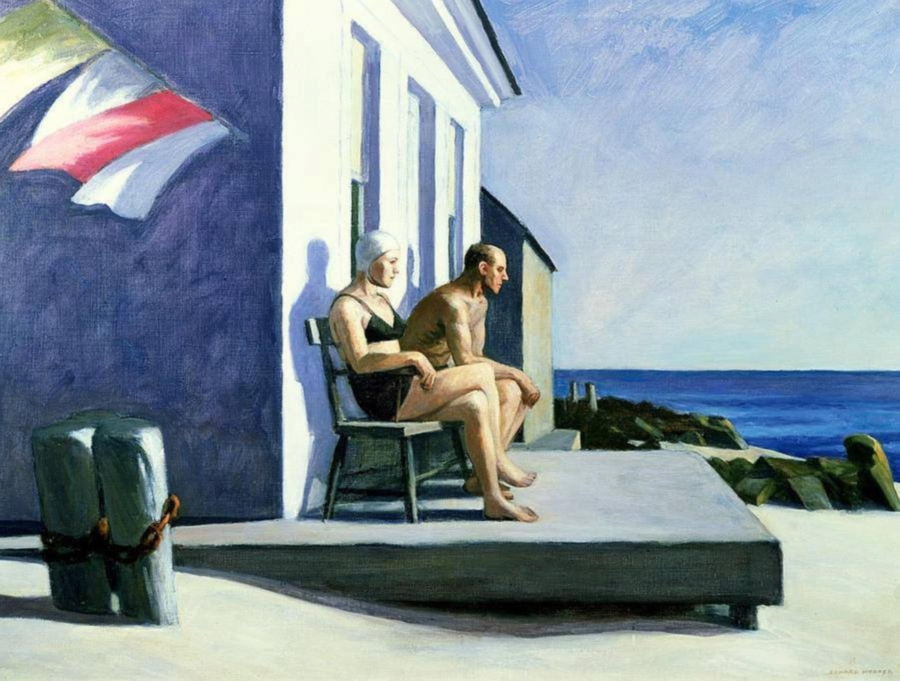
The Sea-Watchers (Edward Hopper, 1952)
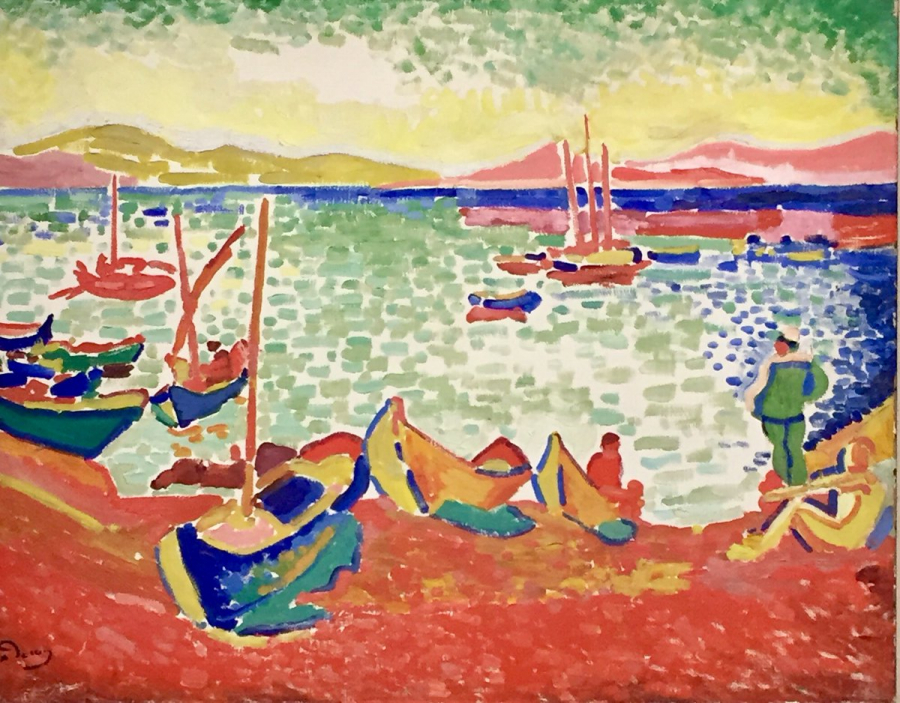
Boats on the Collioure quay (Andre Derain, 1905)

Trouville Beach (Claude Monet, 1870)
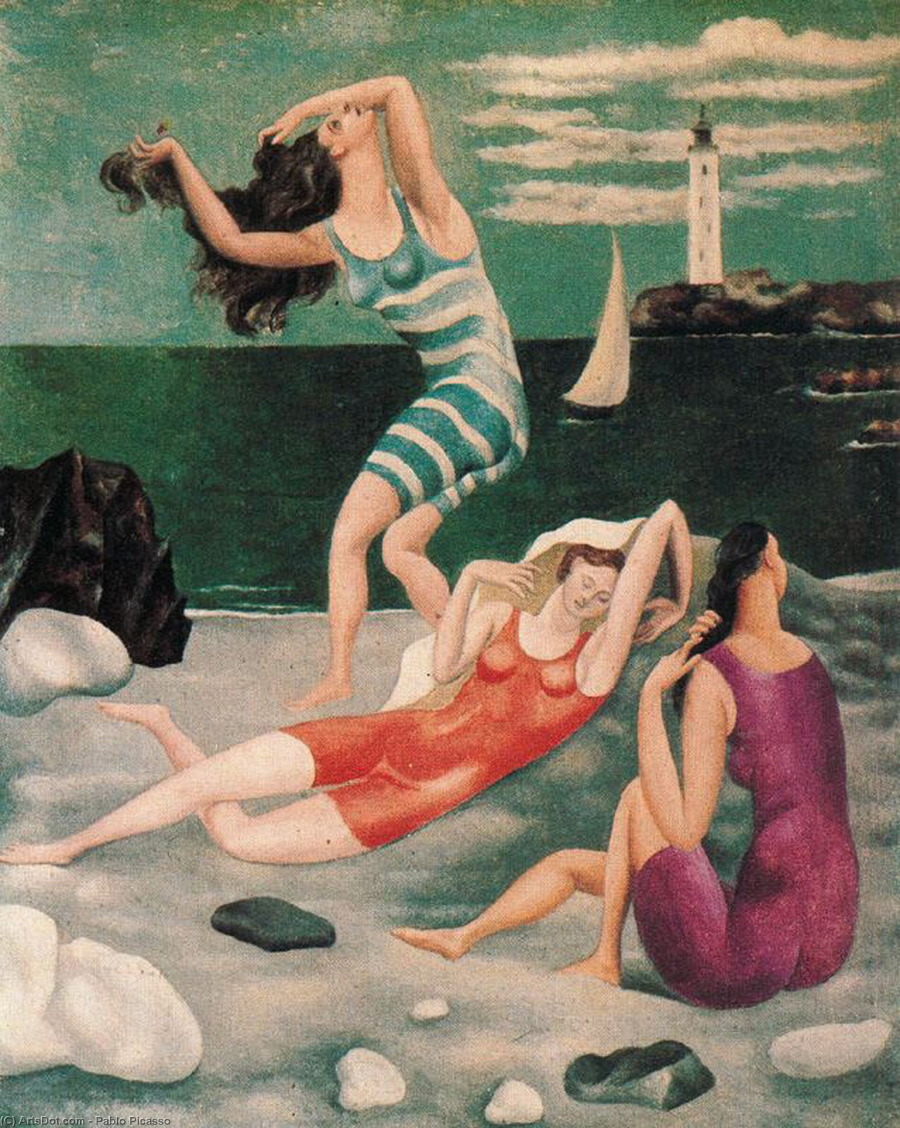
Bathers (Pablo Picasso, 1918)
From 1918 onwards, Picasso spent every summer at the beach, first in Biarritz, then on the Côte d'Azur or Dinard. These summer holidays inspired him to create a series of works depicting beachgoers. "Bathers", created in 1918 in Biarritz, was the first of the series. Before that, most of the paintings of women on the beach were nudes, from Sandro Botticelli's "The Birth of Venus" to Paul Cezanne's "Bathers". But Picasso's painting, a simple and cheerful bathing scene, without fuss or detail, with a simple treatment to highlight the real beauty of the slim and flexible female bodies, has a unique place among his works. The simplicity of the light, the sharp and dull rocks, the colorful bathing suits, the stillness of the ocean, the joy of the young girls... all create a surreal dreamy atmosphere like Tanguy's sea paintings.

Children playing on the beach (Mary Cassatt, 1884)
Mary Cassatt, on the other hand, brings us the innocence and peace of children playing in the sand on the beach. The authenticity of the scene and the naturalness of the children have made many people say that they even feel warm when looking at this painting in the winter...
Party
There are parties in all four seasons, but summer parties are always unique, exciting, impulsive and intoxicating in the lively dance. Renoir's "Lunch on the Boat" and "Dance at the Moulin de la Galette" immortalize the free joy of summer in the smiles of the attendees, and the shimmering sunlight that shines brightly through each inspired patch of color.
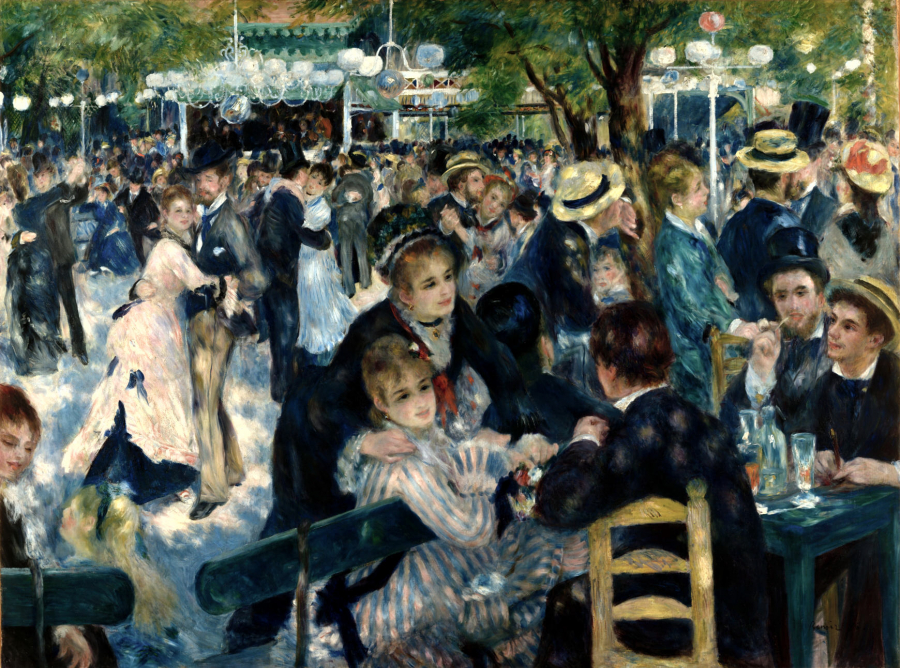
Dance at the Moulin de la Galette (Pierre-Auguste Renoir, 1876)
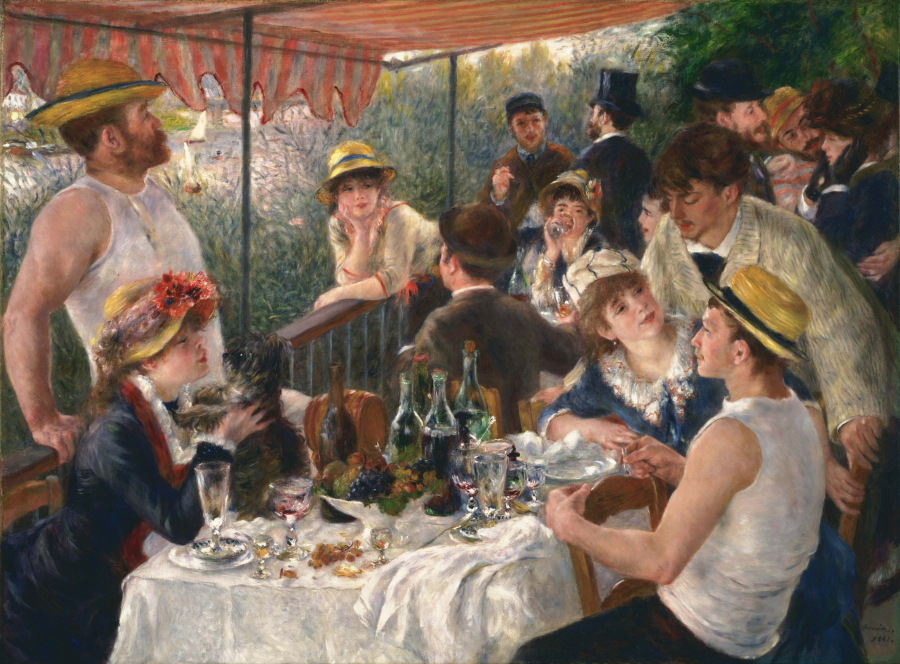
Lunch on the Boat (Pierre-Auguste Renoir, 1881)
Van Gogh painted a summer night ball in Arles, the lights were lit up sparklingly, reflecting on the gorgeous dresses of the young women, all exuding a joyful and bustling atmosphere.
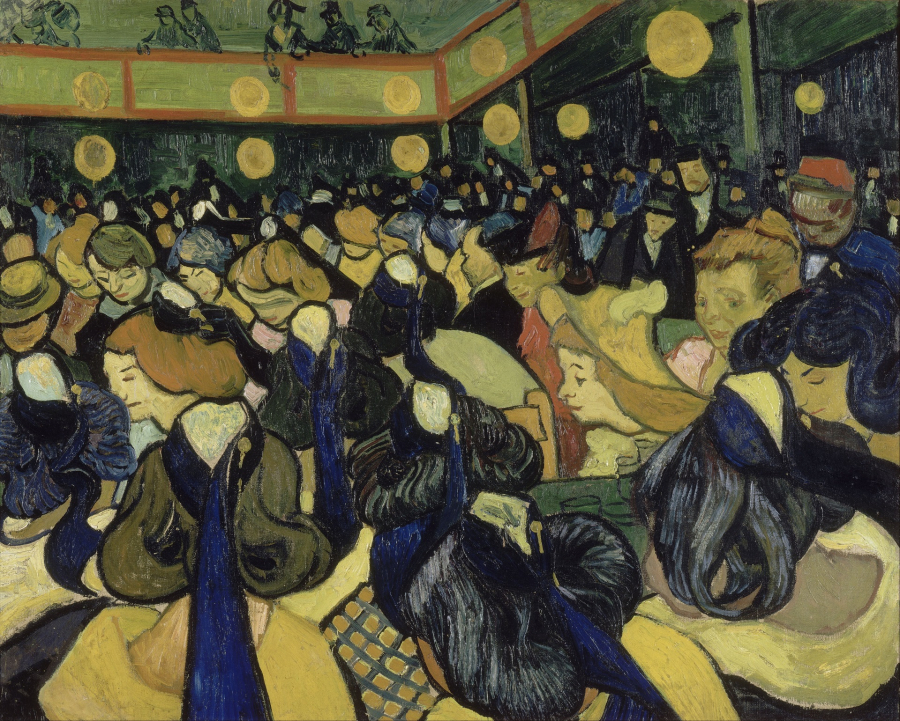
Dance Hall of Arles (Vincent van Gogh, 1888)
Dalí's "nightclub scene" is less bright, evoking the decadent impression of a "month-long party, laughter all night long", as if urging the viewer: look, summer is passing, why hesitate, just get drunk!
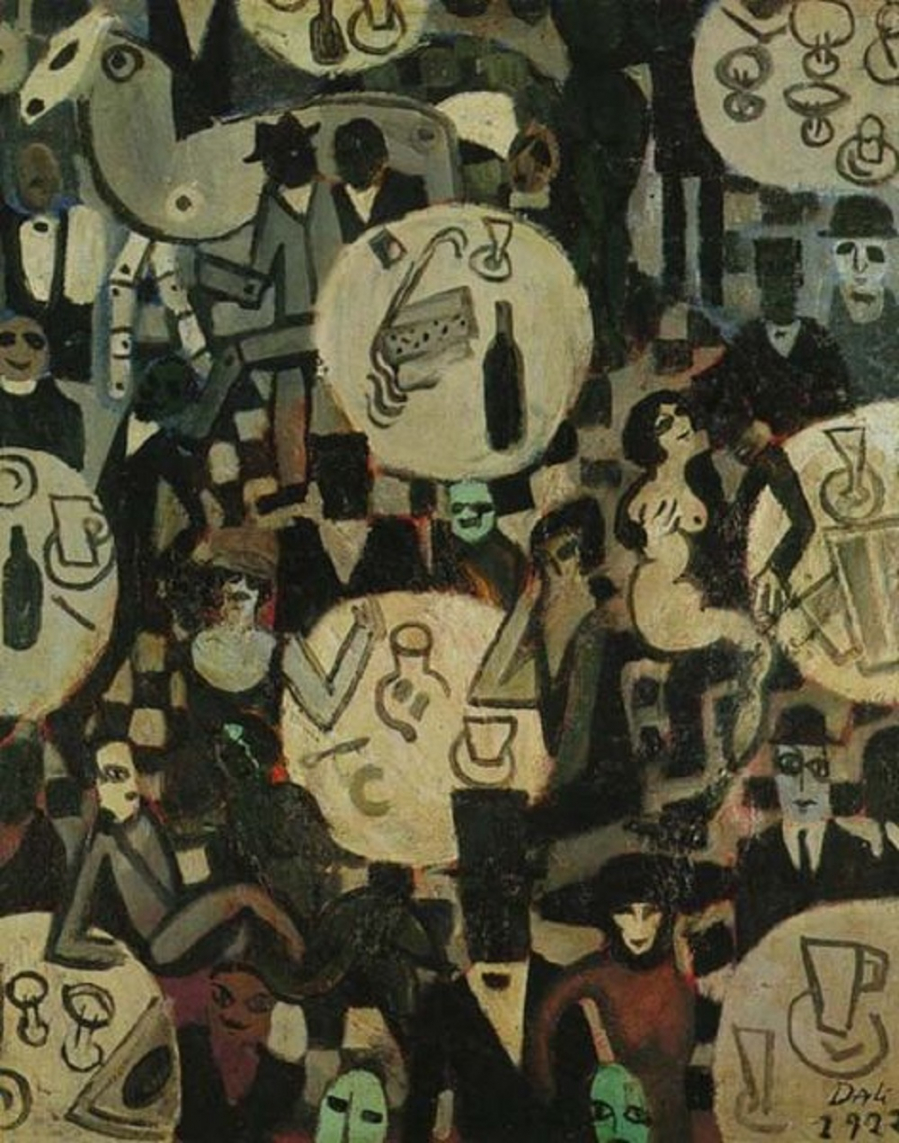
Nightclub Scene (Salvador Dalí, 1922)
Boating
Boating has been a popular activity among European aristocrats since the late 19th century. It is not difficult to understand why many artists found inspiration while going boating, or watching people boating on the river. And to this day, boating in the summer is still a popular activity, both elegant and sporty.
Gustave Caillebotte (a contemporary of Renoir, the man in the yellow cap at the bottom right of "Lunch on the Boat") was a member of the prestigious Paris Yacht Club and was fond of sailing. He painted several sailing scenes around 1877 and 1878, most notably "Rowing on the River Yerres," which shows a lone rower sailing through turquoise waters.
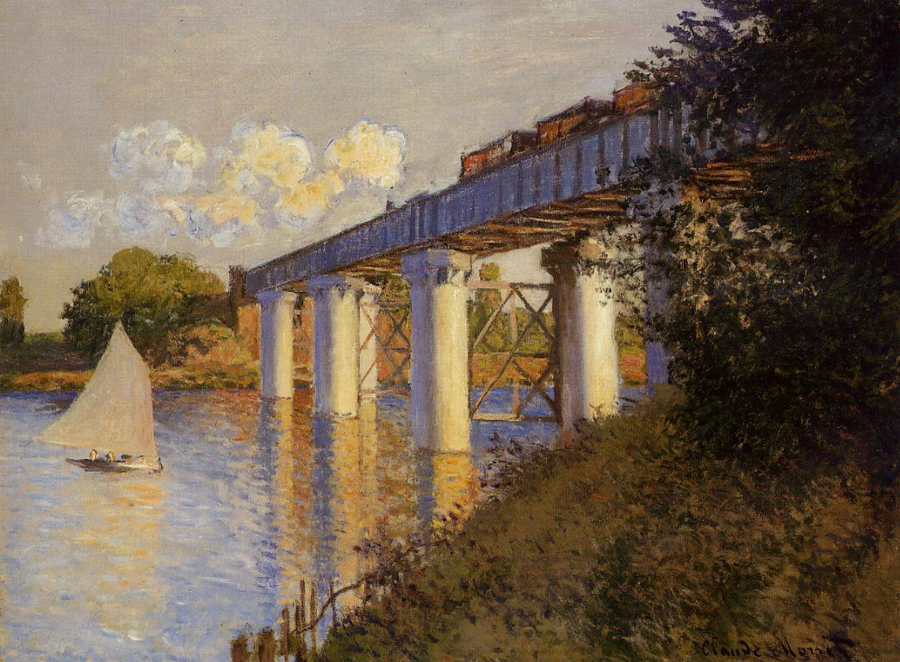
The Railway Bridge at Argenteuil (Claude Monet, 1874)

Going Boating (Mary Cassatt, 1894)
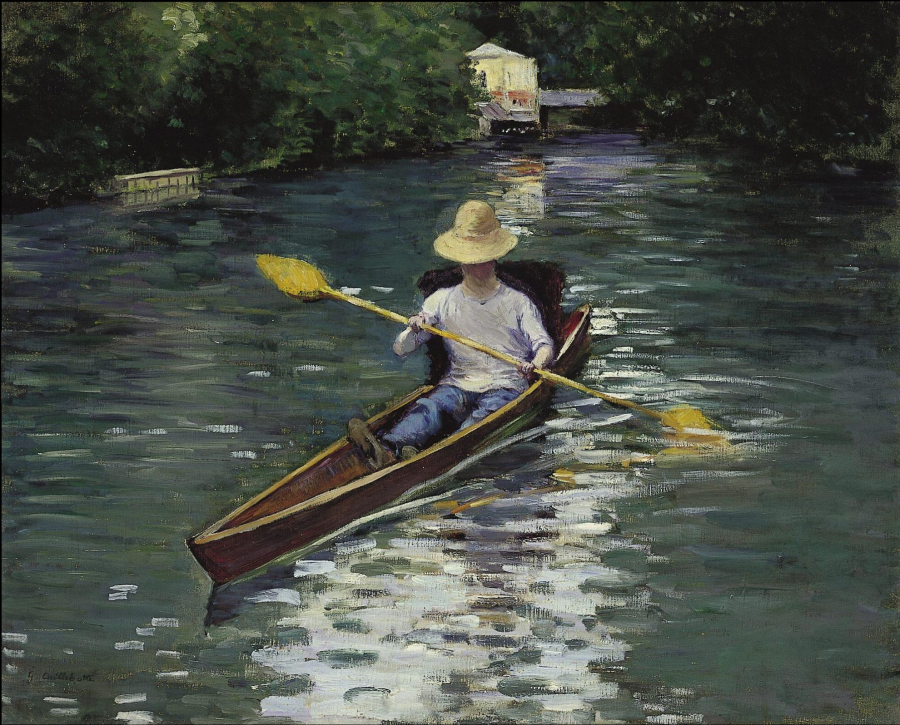
Rowing on the Yerres River (Gustave Caillebotte, 1878)
His interest in sailing is also evident in Mary Cassatt's "Going Out in a Boat," with its powerful yet subtle contrasts of lime green and blue. Or "The Railway Bridge at Argenteuil," which Monet painted after moving to Argenteuil, a small but beautiful town just 11 km from central Paris, in 1872. Often working in nature rather than in a studio, Monet painted many of his riverscapes and Argenteuil's railway bridge while sitting in a boat, and this one is one of them.

Sailing (Edward Hopper, 1911)
Edward Hopper must have taken great pains to perfect the movements of the sails, the boat, and the Hudson River, to create a realistic sense of freedom amidst the vastness of the sky and the waves. The sails filled with wind rush away, carrying the cool breeze of a summer vacation by the river, blowing into the viewers of the painting a hundred years later.
Listening to music
Summer is probably the right time for you to spend more time, not only listening to music, but also practicing playing music. If the lyre in Klimt's painting is too complicated, then the guitar in Matisse's painting is a more suitable choice. Matisse himself was a fan of jazz, he put into the painting a harmonious blend of warm colors, making it easy for viewers to imagine the scene of a summer night filled with passionate love songs...

Music (Gustav Klimt, 1895)
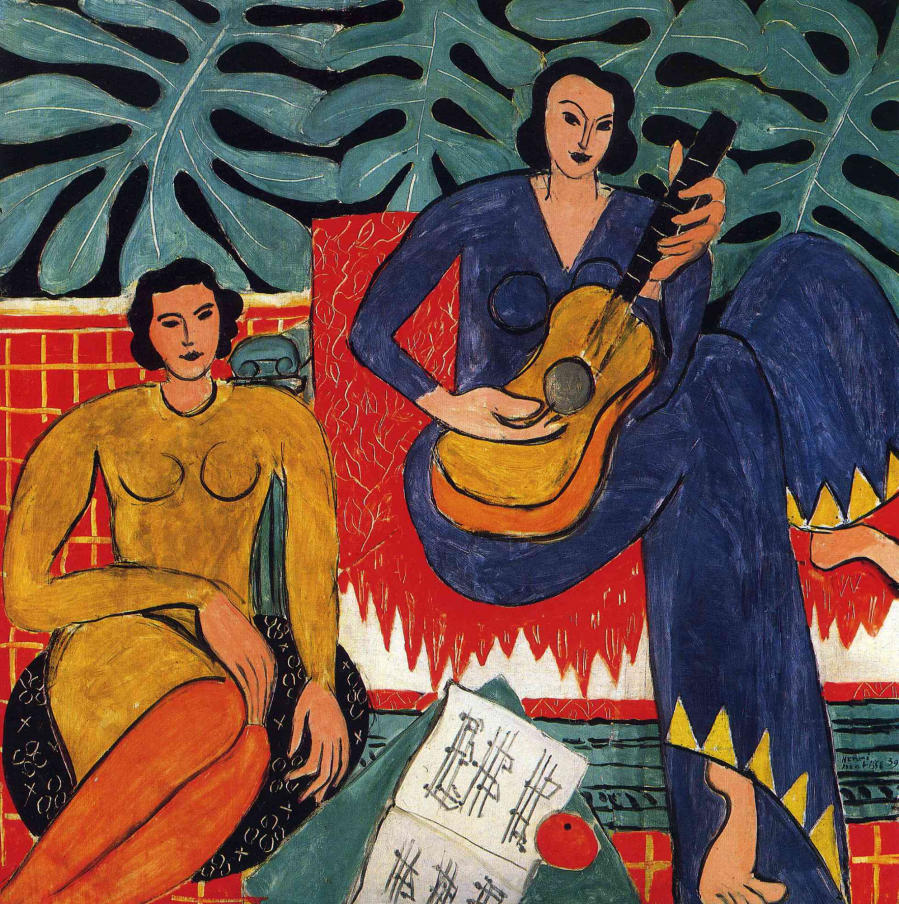
Music (Henri Matisse, 1910)
Or if playing music is too difficult for you, then transform into the other character in the painting and quietly enjoy a "concert" at home. Botero's painting depicts a similar scene. On a hot summer evening in Colombia, the man plays the guitar and sings, the woman listens, the dog sits by the bed listening, and a passerby stops by the window to listen. But judging by the faces of the listeners, perhaps this man is not a very talented musician...
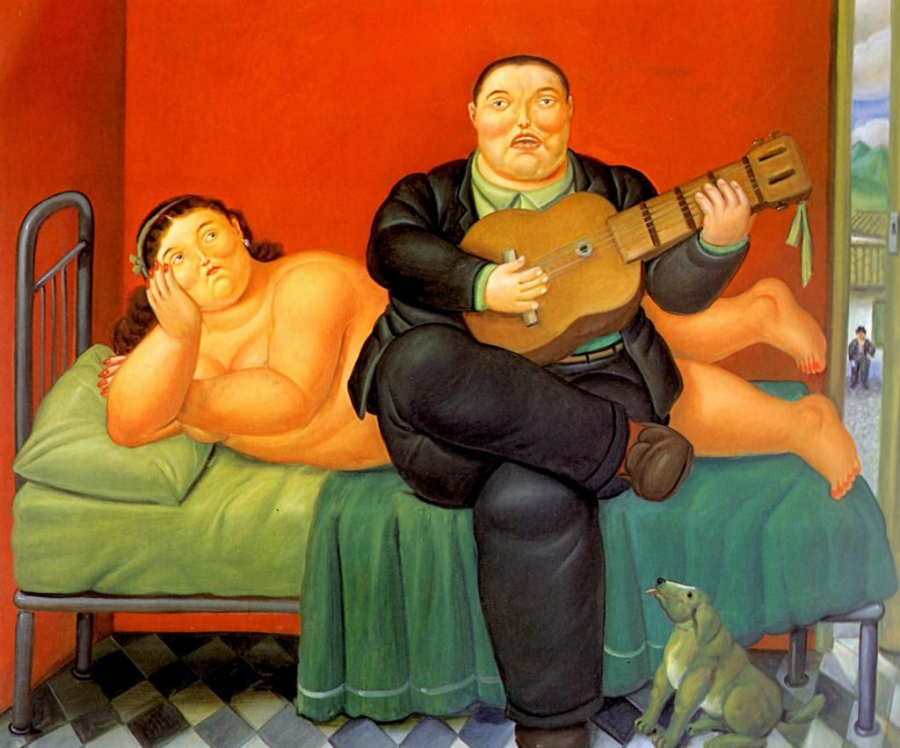
A Concert (Fernando Botero, 1995)
But if the music is so captivating, don't just sit there, stand up, let yourself go with the rhythm and dance like Picasso's dancers!

Three Dancers (Pablo Picasso, 1925)
Read a book
Do you remember the days when you were a child and would sneak out from home to rent books to read? Nowadays, in the hustle and bustle of life, how often do you take the time to leisurely read a book? So it is not surprising that children today are more interested in TV, computers and phones than books!

The Reader (Henri Matisse, 1923)
Why don't we learn from the great painters of the past - they glorified the joy of reading by painting people reading on beautiful summer days, to freely fly in the world of imagination, in the creativity that words and language bring.

Woman Reading a Book (Pablo Picasso, 1932)
Cycling
When it comes to summer activities, cycling is a must. You can race your bike to satisfy your passion for speed, or just leisurely explore the beautiful surroundings. Just look at the joy on the faces of the children in Ernest Zacharevic’s paintings!
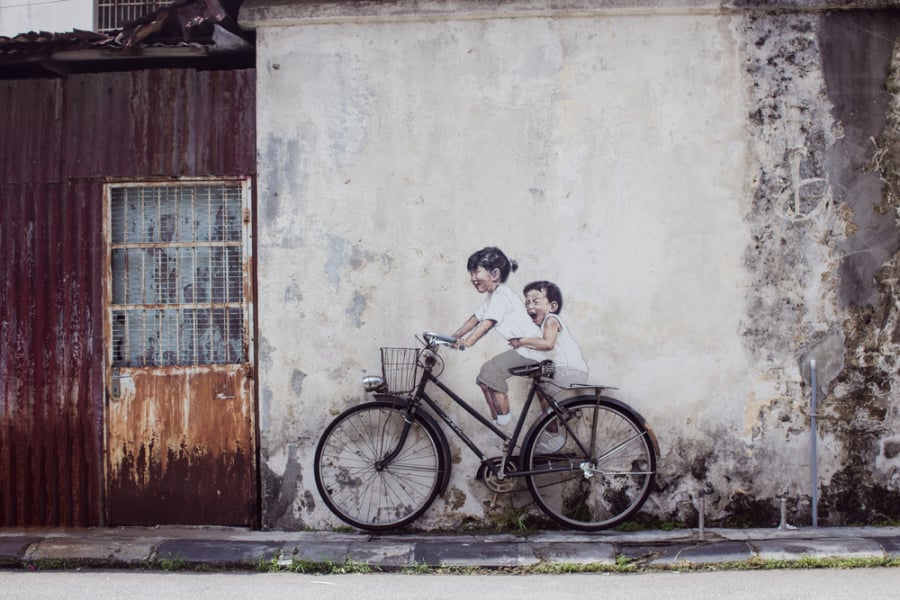
Children on Bicycles (Ernest Zacharevic, 2012)
"Kids on Bicycles" is a mural by Ernest Zacharevic, a Lithuanian artist, in George Town, Penang, Malaysia. George Town is considered a giant museum because it has collaborated with many artists to create interesting and fun street art, bringing a very unique urban beauty.
Sports
Don’t forget to take time to play sports to stay healthy in the summer. Artists are often interested in sports, which is an ideal subject to show off their talent for imitating movement. Take the tennis match in Lavery’s painting: the balls scattered on the grass, the casual clothes and smiling faces of the participants convey the peaceful atmosphere of a summer afternoon.

The Lasting Series (John Lavery, 1885)
Sports competitions are also a familiar subject for Lawrence Toynbee, one of which is the clash between Chelsea and Tottenham Hotspur at Stamford Bridge. Heavily influenced by Anthony Fry’s paintings of dancers, Toynbee captures the speed and dynamism of a rugby match, rendering the strikers’ legs as streaks of colour, their faces blurred in the rapid movement of the game.

Overcoming the strikers (Lawrence Toynbee, 1961)
Sleep
Do you feel unreasonable? Because who doesn't have to sleep, all year round, all month, 8 hours a day, not just in the summer? But amidst the hustle and bustle of life, not everyone remembers to take care of themselves, rest and relax properly. Take some time to give yourself a deep, full, full sleep like the woman in Picasso's "Dream"...






